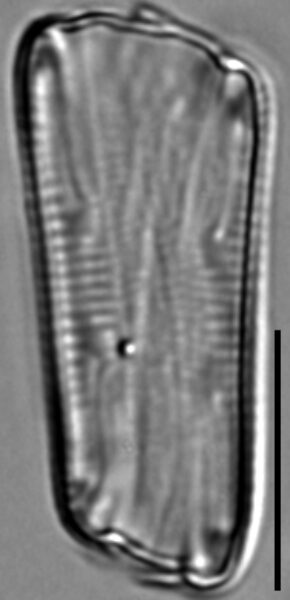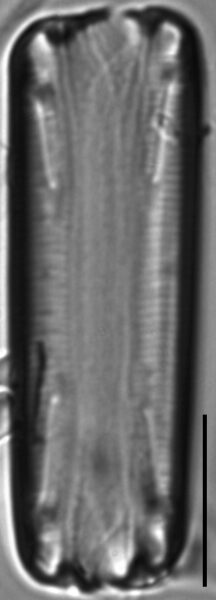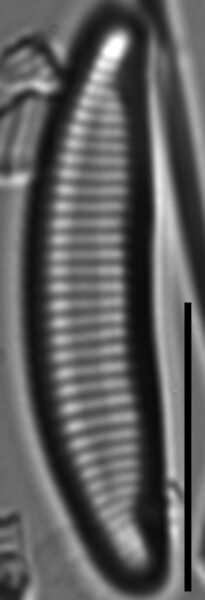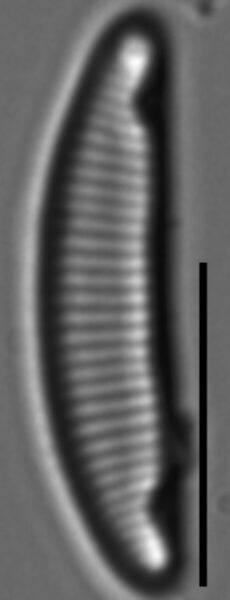Compare Eunotia rhomboidea
Compare
Eunotia rhomboidea is similar to E. papilioforma because the widths of valve apices are not symmetric (one end is wider than the other). Valves of E. rhomboidea are, on average, narrower than valves of E. papilioforma. In E. papilioforma the positions of the helictoglossae relative to the valve apices can vary between valve apices within a specimen and among specimens within a population, where in E. rhomboidea, the positions of the helictoglossae are more consistent among specimens and within populations. Valves of E. rhomboidea are asymmetric in regard to apex width. Also, the helictoglossa are not as inset (or far) from the apices, in contrast to valves of E canicula and E. incisa which are symmetrical to transapic axis and have helictoglossae farther from (more inset) from the apices. The terminal raphe end curves on to the valve face in E. rhomboidea in contrast to E. incisa where the small groove of the distal raphe end lies in the mantle.
LM scalebar = 10 µm







Length Range
18.0-25.6 µm
18.0-25.6 µm
Width Range
2.7-3.8 µm
2.7-3.8 µm
Striae in 10 µm
15-17 in the center valve
15-17 in the center valve
Eunotia incisa







Length Range
12-50 µm
12-50 µm
Width Range
2.8-5.0 µm
2.8-5.0 µm
Striae in 10 µm
16-21 in the center valve
16-21 in the center valve
 Diatoms of North America
Diatoms of North America











